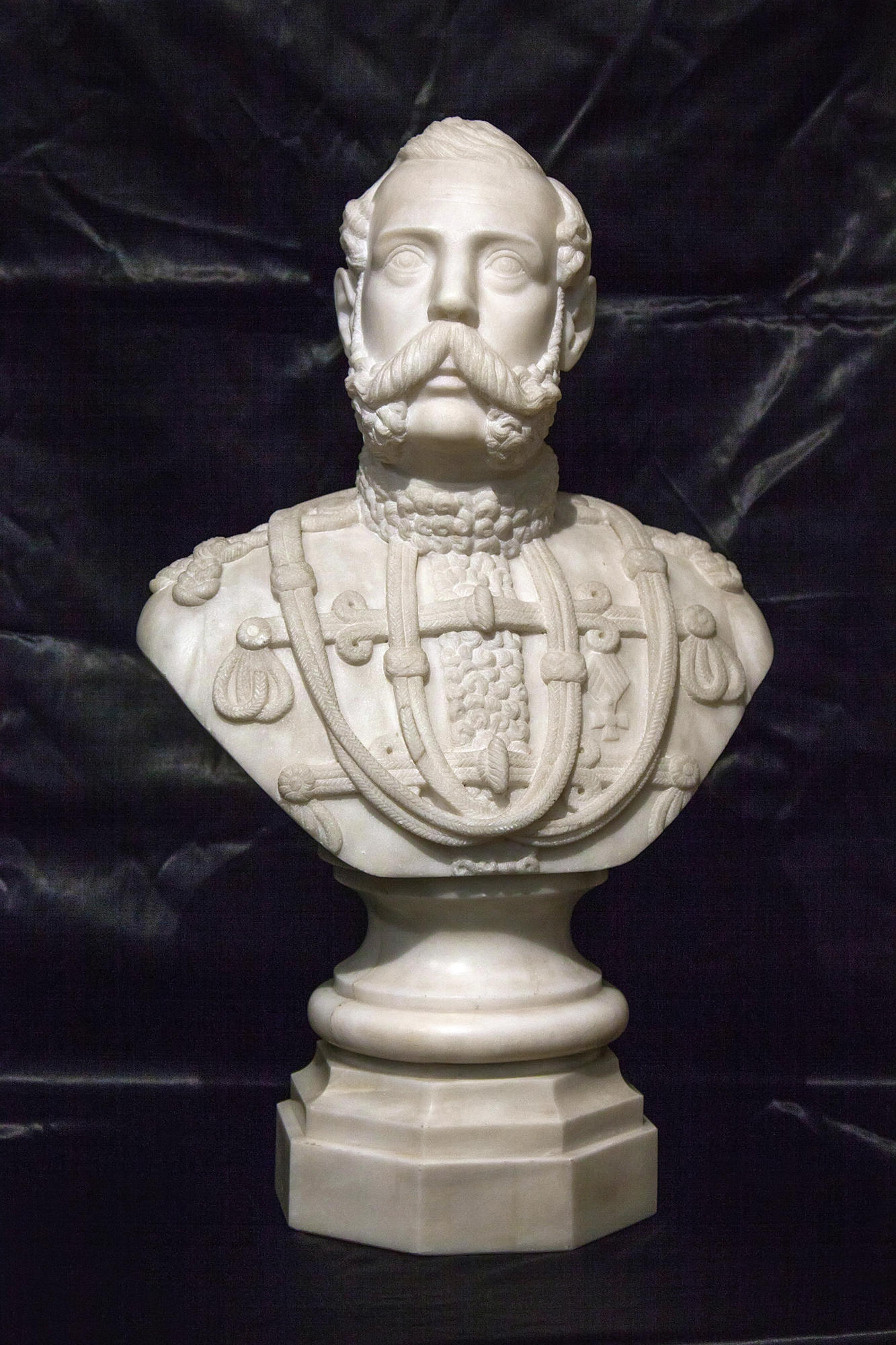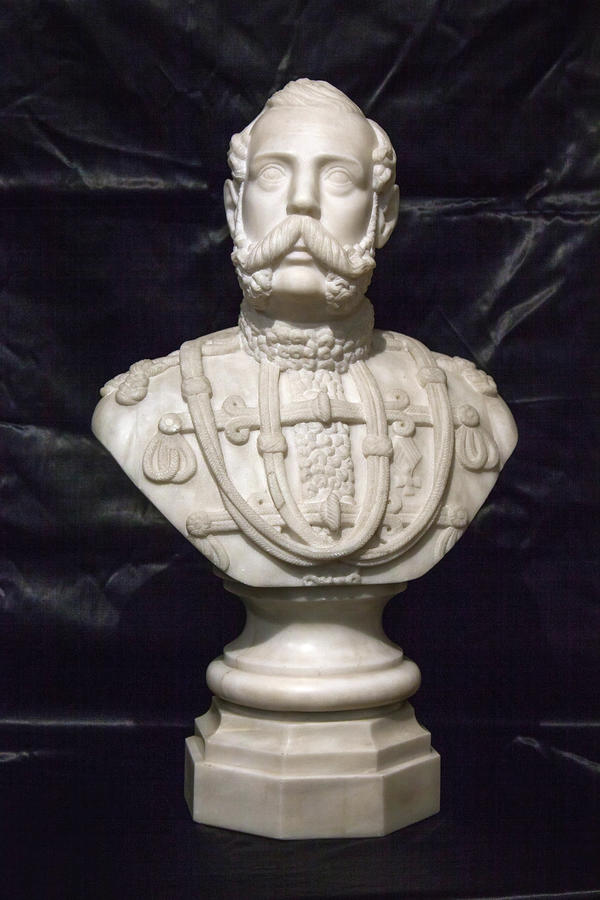The first member of the imperial dynasty to visit the Tobolsk Governorate was Tsesarevich Alexander Nikolaevich, future Emperor Alexander II. He arrived there on June 1, 1837. The same evening, in the Public Assembly, there was held a ball in honour of His Highness. The whole next day the heir to the throne dedicated to the inspection of public charity institutions, visited the gymnasium. He also came to the Tobolsk Prison, which at that time fell into decay. Therefore, having returned to St. Petersburg, the Tsesarevich informed his father, ruling Emperor Nicholas I, about the need to build a new Prison Castle in Tobolsk.
After Alexander II’s death, a marble bust of the Emperor was installed in the Tobolsk Male Gymnasium. That event took place on August 29, 1881. The opening ceremony was attended by Tobolsk Governor Vladimir Lysogorsky, representatives of various institutions and estates of the local society.
The sovereign’s bust of white marble on a wooden pedestal was placed in the assembly hall, in front of a portrait of reigning Emperor Alexander III. Money for the bust — 210 roubles — was collected through voluntary donations; the bust was made by a master from Yekaterinburg. His name has not been found in historical documents.
Four representatives of the Romanov dynasty visited the Tobolsk Governorate on several occasions. After Alexander II, Grand Duke Vladimir Alexandrovich was here in 1868, and Grand Duke Alexei Alexandrovich in early 1873. On July 10, 1891, Siberia welcomed Tsarevich Nikolai Alexandrovich, future Emperor Nicholas II.
The August guests were greeted with special honour, and preparation for the visit lasted several months. The arrival of each representatives of the House of Romanovs was a great event for all local residents. Therefore, the Irtysh River banks attracted hordes of people who occupied the entire pier opposite the bazaar, booths and even shop roofs. Their Highnesses were greeted with cheers, all-round chimes and a hymn performed by the Tobolsk orchestra. The whole city was decorated with multi-coloured flags, a hedgerow was installed along the road from the pier, and the pavement was covered with red cloth.
For the members of the Romanov Family, acquaintance with Tobolsk began with a walk around the Kremlin, service in the Cathedral of Saint Sophia and inspection of the exiled bell they would strike once. Then Their Highnesses attended the gymnasium, theological seminary and other educational institutions of the city.
After Alexander II’s death, a marble bust of the Emperor was installed in the Tobolsk Male Gymnasium. That event took place on August 29, 1881. The opening ceremony was attended by Tobolsk Governor Vladimir Lysogorsky, representatives of various institutions and estates of the local society.
The sovereign’s bust of white marble on a wooden pedestal was placed in the assembly hall, in front of a portrait of reigning Emperor Alexander III. Money for the bust — 210 roubles — was collected through voluntary donations; the bust was made by a master from Yekaterinburg. His name has not been found in historical documents.
Four representatives of the Romanov dynasty visited the Tobolsk Governorate on several occasions. After Alexander II, Grand Duke Vladimir Alexandrovich was here in 1868, and Grand Duke Alexei Alexandrovich in early 1873. On July 10, 1891, Siberia welcomed Tsarevich Nikolai Alexandrovich, future Emperor Nicholas II.
The August guests were greeted with special honour, and preparation for the visit lasted several months. The arrival of each representatives of the House of Romanovs was a great event for all local residents. Therefore, the Irtysh River banks attracted hordes of people who occupied the entire pier opposite the bazaar, booths and even shop roofs. Their Highnesses were greeted with cheers, all-round chimes and a hymn performed by the Tobolsk orchestra. The whole city was decorated with multi-coloured flags, a hedgerow was installed along the road from the pier, and the pavement was covered with red cloth.
For the members of the Romanov Family, acquaintance with Tobolsk began with a walk around the Kremlin, service in the Cathedral of Saint Sophia and inspection of the exiled bell they would strike once. Then Their Highnesses attended the gymnasium, theological seminary and other educational institutions of the city.



